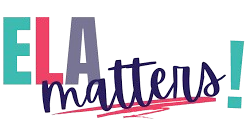Choosing the right employee rewards platform for your organization is a big decision—one that can impact company culture, employee engagement, and ultimately, retention. With so many options on the market, it’s easy to feel overwhelmed or unsure where to start.
One of the best ways to cut through the noise is to schedule a demo. A live demonstration gives you a firsthand look at how a platform works, what features it offers, and whether it fits your company’s unique needs. But to get the most from these demos, you need to ask the right questions.
In this article, we’ll walk through what to look for and the key questions to ask during an employee rewards platform demo. Whether you’re a Human Resources professional, team leader, or business owner, this guide will help you make a confident, informed choice.
- Understand Your Goals First
Before you even book a demo, it’s important to clarify your goals. What are you hoping to achieve with an employee rewards platform?
- Are you aiming to boost employee engagement?
- Do you want a tool to recognize milestones and daily achievements?
- Are you looking for a solution that supports remote and hybrid teams?
- Do you want to improve overall company culture or enhance manager-employee communication?
Knowing what matters most to your organization will help you focus on the features that align with your goals during the demo.
- Ask About the Recognition and Reward Features
Employee rewards platforms are all about appreciation, so start by asking how recognition works on their system. Consider questions like:
- How can employees recognize each other? Is peer-to-peer recognition supported?
- Are there customizable badges, shout-outs, or awards?
- Can managers recognize their teams, and is there a way to spotlight company values?
- What kind of rewards are available? Are gift cards, merchandise, or experiences part of the catalog?
- Is there flexibility for employees to choose rewards that feel meaningful to them?
Make sure the platform makes recognition easy, frequent, and visible—because consistency is key to building a culture of appreciation.
- Explore Integration and Usability
A great rewards platform shouldn’t feel like another complicated tool your team has to learn. During the demo, ask:
- How user-friendly is the platform for employees and managers?
- Does it integrate with existing tools like Slack, Microsoft Teams, or payroll software?
- Is it accessible on desktop and mobile devices?
- How easy is it to onboard new users?
- Can the platform support multiple languages if your team is global?
Ease of use is crucial for adoption. Even the best platform won’t be effective if it’s cumbersome or confusing.
- Inquire About Reporting and Analytics
To justify the investment in a rewards platform, you’ll want to understand its impact. A good system will provide clear insights. During your demo, find out:
- What types of reports are available? Can you track participation, spending, or engagement over time?
- Are there dashboards for managers or HR to monitor team morale and activity?
- Can you measure the ROI of your rewards programs?
- Are there pulse surveys or feedback tools built-in to measure employee sentiment?
Data helps you adjust your strategy and demonstrate success to leadership.
- Check for Flexibility and Customization
Every company culture is unique, so a one-size-fits-all platform might not cut it. Ask about:
- Customization options for branding, messaging, and reward types.
- Can you create different recognition programs for departments or regions?
- Is there support for milestone celebrations like birthdays, anniversaries, or project completions?
- How does the platform handle different budgets or reward tiers?
Customization means the platform can grow with your company and stay relevant to your people.
- Understand Support and Implementation
Implementing a new tool requires support. During the demo, ask about:
- What does the onboarding process look like?
- Is there dedicated support during setup and after launch?
- What training resources are available for employees and managers?
- How often is the platform updated with new features?
A responsive support team can make all the difference when rolling out a new program.
- Consider Pricing Transparency
Pricing models for employee rewards platforms can vary widely. It’s important to ask:
- How is the pricing structured? Is it per user, per active user, or based on reward redemption?
- Are there any hidden fees, setup costs, or long-term contracts?
- What’s included in each pricing tier?
- Is there a free trial or pilot program?
Understanding costs upfront prevents surprises later.
- Look for Proof of Success
Finally, it helps to hear from companies like yours who have succeeded with the platform. During the demo, ask:
- Can they share case studies or testimonials from similar organizations?
- What kind of results have clients seen in engagement or retention?
- Are there any awards or industry recognition that back their credibility?
Seeing real-world examples can build confidence that you’re making a sound investment.
Wrapping Up: The Demo Is Your Time to Explore
Remember, a demo isn’t just a sales pitch—it’s your opportunity to see how the platform could fit into your company’s culture and goals. Don’t be afraid to ask detailed questions, request to see specific features in action, or even ask for a follow-up demo focused on your top priorities.
If you’re ready to explore, many companies offer demos that let you get a feel for their system without pressure. For example, you might want to try Motivosity—it’s an employee rewards and recognition solution known for its intuitive interface, flexible rewards, and strong culture-building tools.
Choosing the right platform takes time, but with the right questions in hand, you’ll be well-equipped to find a solution that truly supports your people and your business.

